The proud and powerful story of cotton, inabel, and agriculture in fashion manifests on the runway of Algodon
This Fashion Feature is an excerpt from MEGA’s April 2023 issue.
Nature, life, and thought-provoking art brought a purposeful fashion narrative to life at the Pintô Art Museum through a fashion show called Algodon. Directly translating to “cotton,” the Spanish term algodon became representative of the Filipino fashion community, cultivating a lifestyle in agriculture, particularly the revitalization of cotton farming.
Five Filipino designers—BARBA, JC Buendia, Anthony Nocom, Randy Ortiz, and Pepito Albert—presented their interpretation of the ethically sourced and sustainable cotton fibers. The materials were all produced locally at the now 20-hectare cotton farm in Pinili, Ilocos Norte, helping over dozens of weavers in the local community.
VIC BARBA
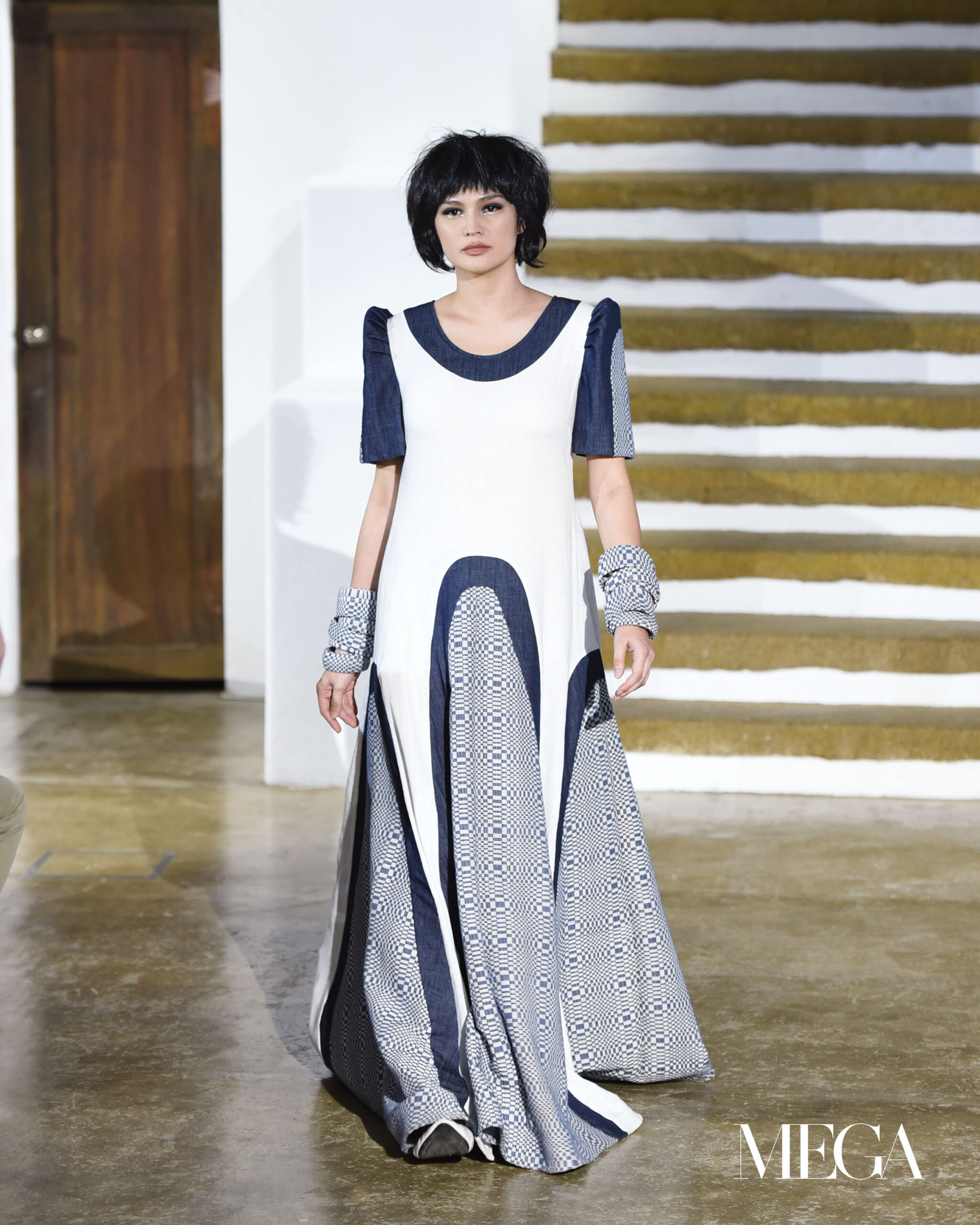
“No farmers, no fiber, no fashion,” says designer Vic Barba, matter-of-factly. “The equation is that simple.”
Done in a hip fashion reminiscent of the ’80s, with the silhouettes and unique mix of patterns, Barba’s collection was of hues of mostly black, white, and gray, with pops of color, such as pink and muted reds also making appearances.
“The design mission was to present the algodon inabel in prominence, side by side the usual suspects of cotton, linen, and denim, in pieces that aren’t the norm,” adds Barba.
The designer admits that ethically sourced products are hard to come by—and that’s just the first challenge. There’s also the costs that come with it. So how can consumers and designers better support the local community through fashion? For Barba, it’s buying Filipino and wearing Filipino.
JC BUENDIA
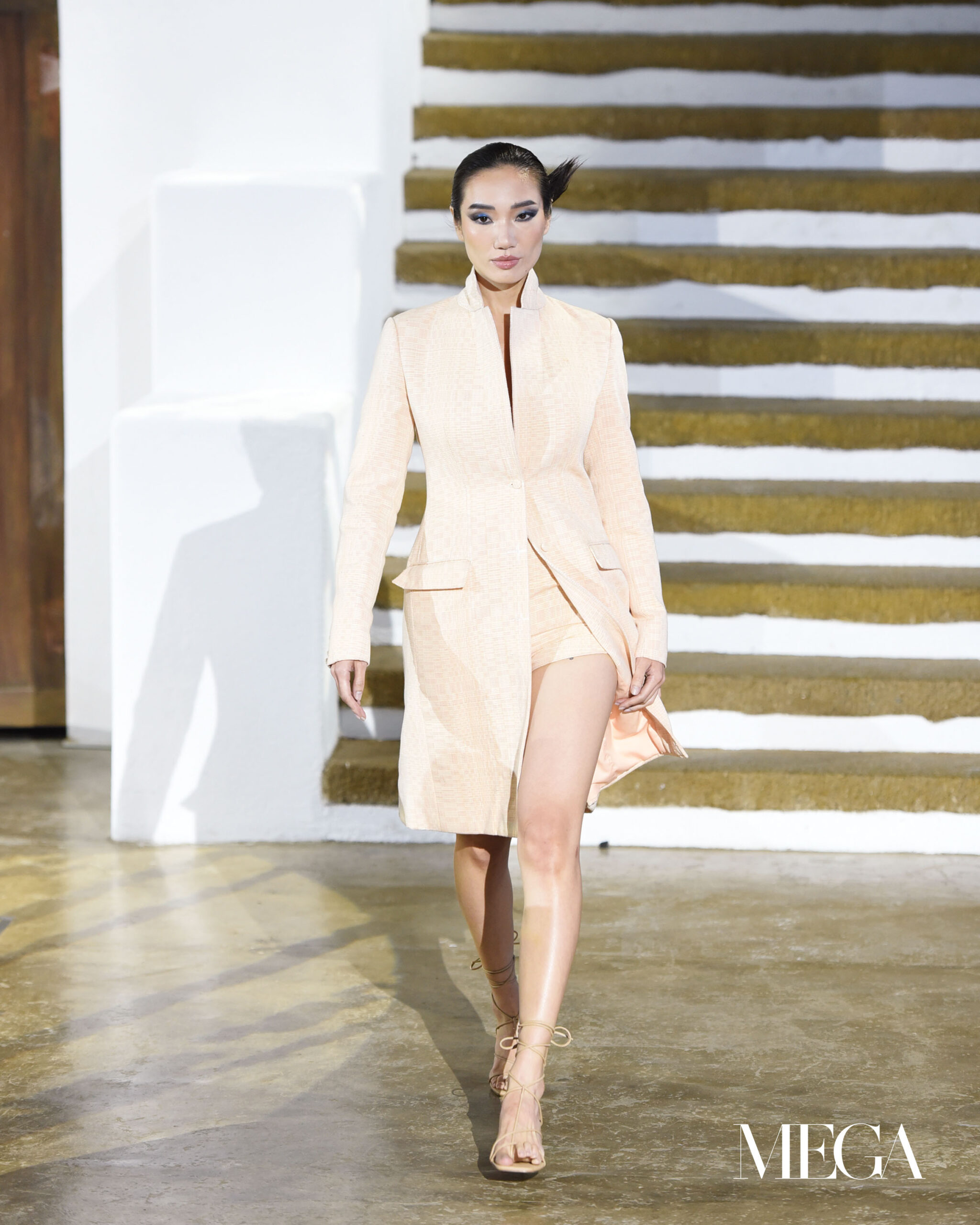
JC Buendia delved into the notion of fluctuating weight for his collection, something he says everybody struggles with. He made different variations of the bib, which can simply be tightened or loosened at the sides with straps.
“Agriculture plays a big part in fashion, especially now that there are a lot of environmental concerns,” says Buendia. “Supporting local weaving communities who use locally grown cotton and pineapple fiber is a good way of keeping the community chain going. One challenge, though, are price points. Perhaps if more designers will use locally weaved fabrics, prices will go down and sustainable fashion will be affordable for everyone.”
For Buendia, one way consumers can discover new and exciting local weaves and designers is through the seasonal pop ups, a venue where designers and weavers (who can’t afford to have their own stores) showcase their new ideas. Designers, on the other hand, should keep up with the pace of product development as consumers are constantly looking for the next big thing.
ANTHONY NOCOM
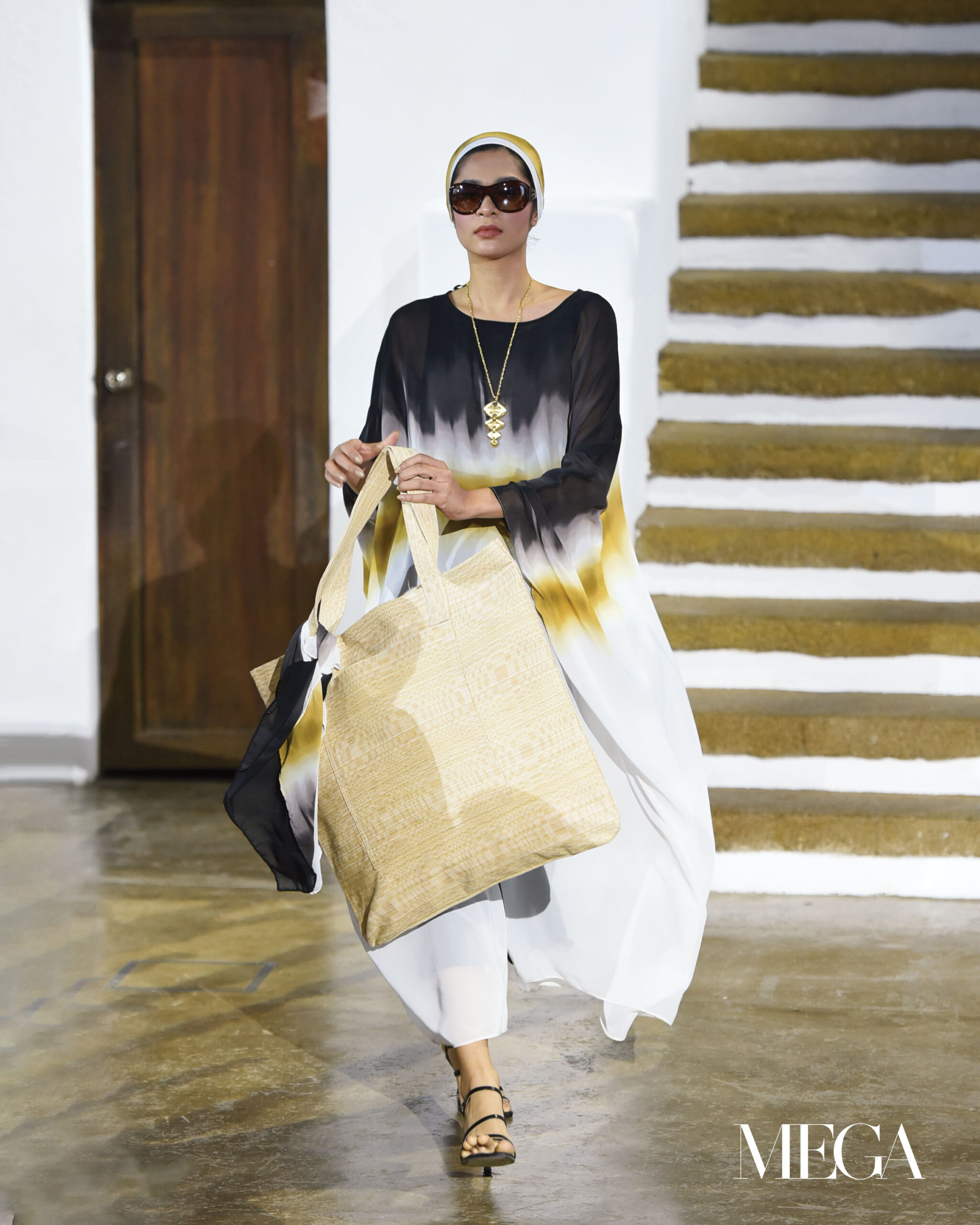
“Everyone in the fashion industry—designers, textile millers, clothing manufacturers—has to have a commitment to the cause,” says designer Anthony Nocom, adding that there is a lack of awareness among locals when it comes to sustainable fashion.
As Nocom explains it, the country is teeming with resources. He mentions that the Philippines used to be a top rice producer, with the institution of the International Rice Research Institute (IRRI) supporting that point. But now, the country has been surpassed by Thailand and is currently resorting to rice importation.
“I can see local fabric weaves will also be overtaken,” he says. “The weave patterns and designs are similar to other Southeast Asian countries. There are lots of challenges that come with having ethically sourced materials. We should work on these challenges or else we will be bypassed by other regional countries.”
RANDY ORTIZ
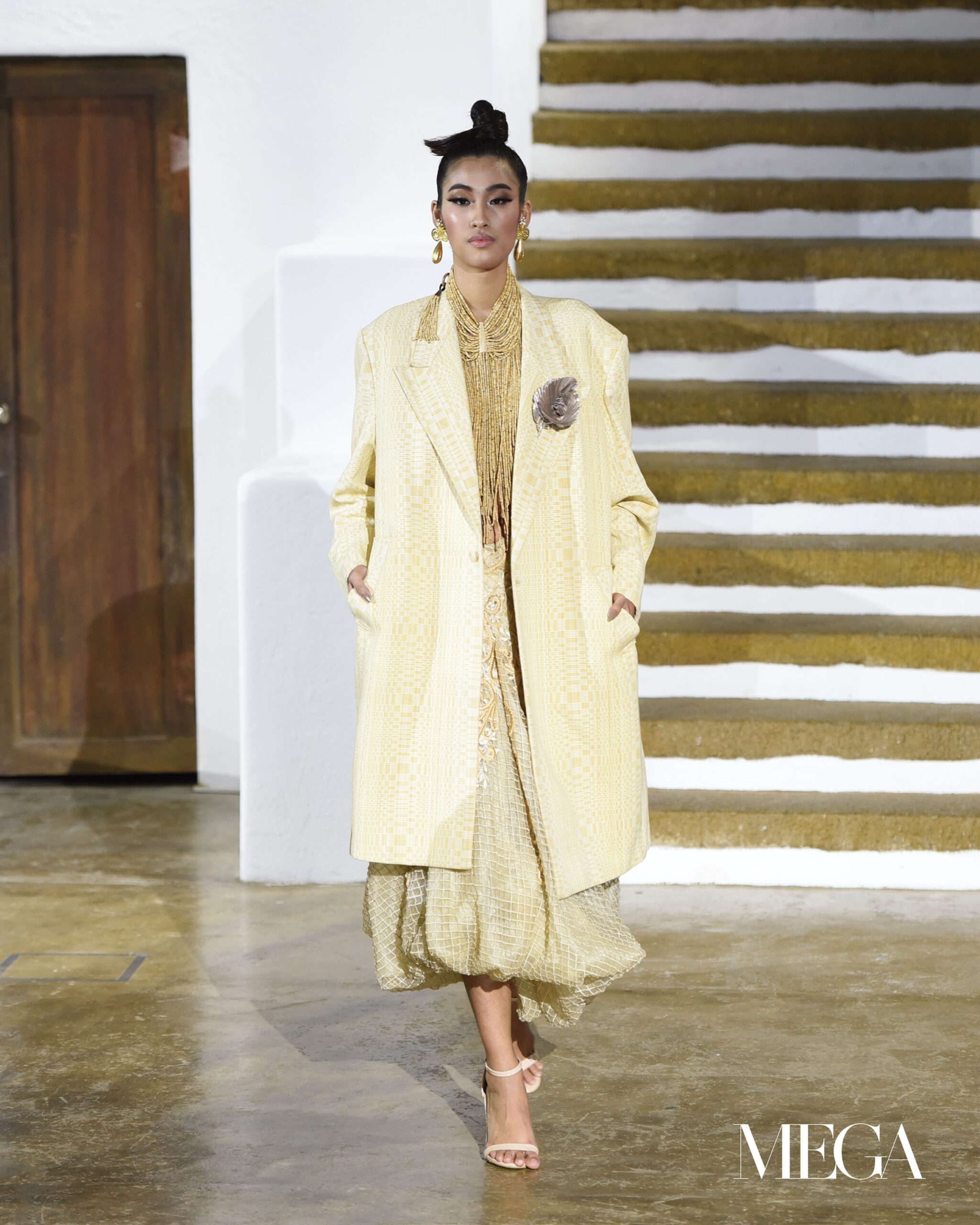
Designer Randy Ortiz went for a more avant-garde look in the Algodon show, with the last line of pieces having a certain dynamic twist to the cloth. Contrasting colors were matched, while others explored the same color in different shades. Draping techniques were subtle yet they made such an impact as the clothes exuded an elevated detail to them.
“The narrative of my collection in Algodon is modern Filipino fashion,” says Ortiz. “By using 70 to 80 percent inabel and incorporating local artisanship, I wanted to create something that not only Filipinos will appreciate but pieces that can be worn by anyone who loves fashion in any part of the globe.”
The clear cut direction Ortiz sees? Promoting local weaves and making sure it’s supported to make it really sustainable. He explains that ethically sourced materials are costly. The width is limited to make it cost efficient and the time for weaving is too long to meet the demands.
“The trend now is sustainable fashion, which is organic and plant-based,” Ortiz notes. “Indigenous weaves, which are developed throughout the country, make agriculture so pivotal.”
PEPITO ALBERT
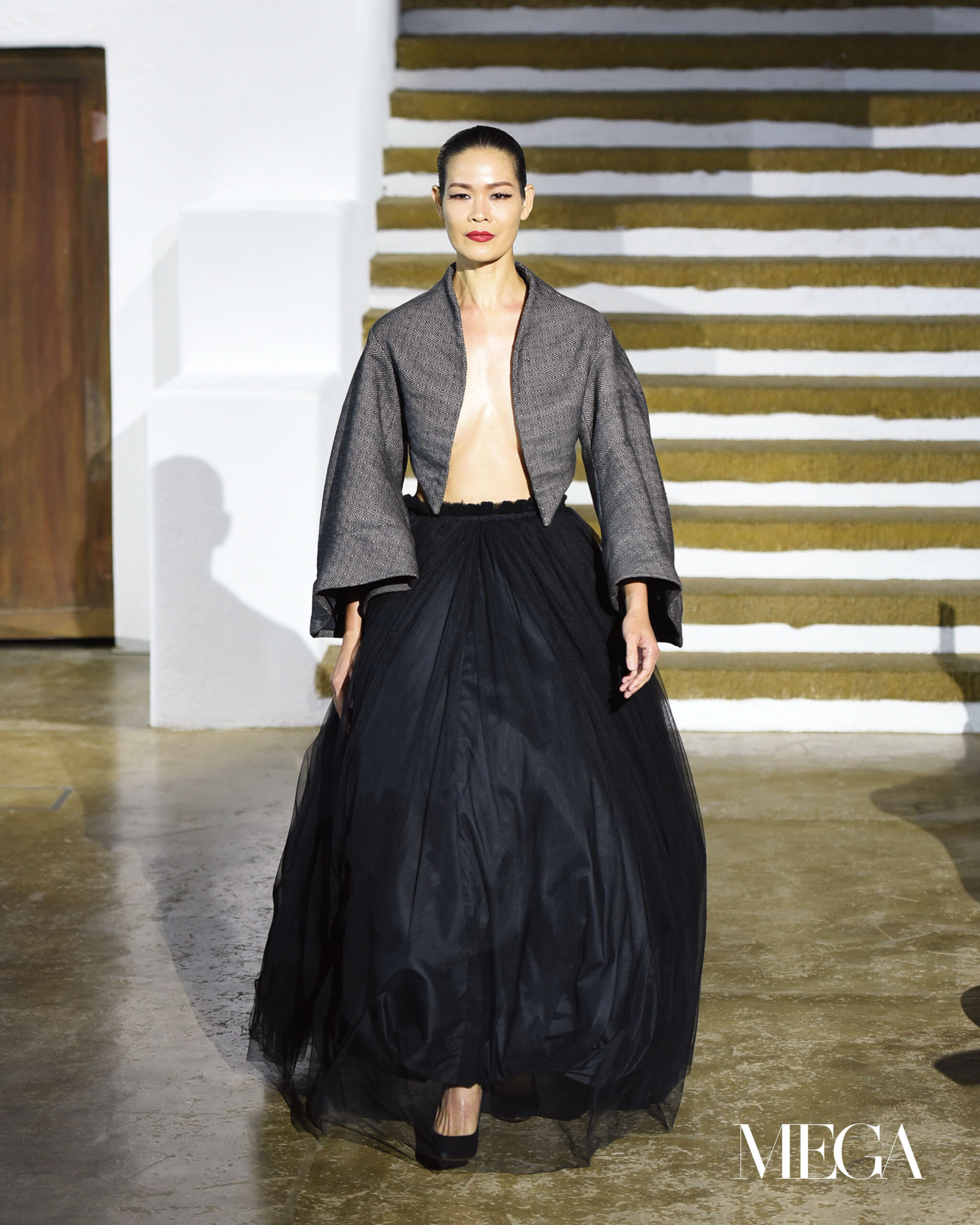
Capping off the night was model Joan Bitagcol, who took the spotlight as she wore a piece designed by Pepito Albert.
A billowed out black skirt matched the exaggerated sleeves of the gray bolero, while her torso was clean from any fabric. Made with such simplicity, yet still leaving the audience in awe—a perfect way to end the Algodon fashion show.
Photography KIERAN PUNAY of KLIQ INC.










